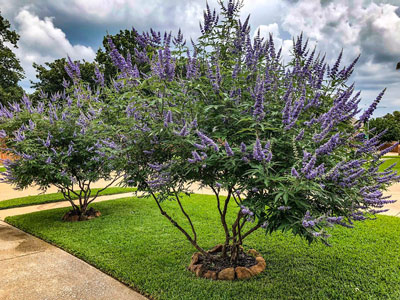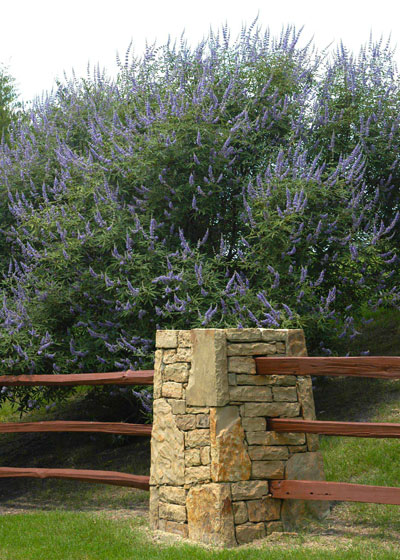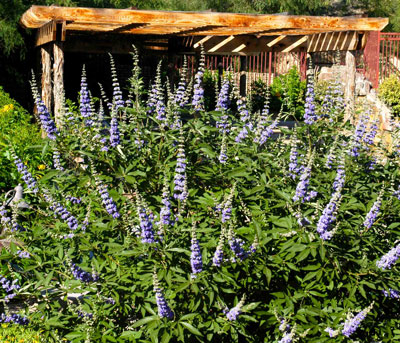Brought Back from the Past

Every year people ask me about this beautiful big shrub/small tree. I love this plant. It was common in College Station when I was a kid, and now it’s becoming common again all across Texas. This is its season.
Basic facts to succeed…

• Scientific name: Vitex agnus-castus.
• Common name: Vitex, lilac chaste tree. Sadly, some people insist on calling it ‘Texas lilac,’ even though it’s not related to lilacs and doesn’t have their aroma.
• Hardiness Zone: 6-9 (almost all of Texas).
• Mature size: 10-12 ft. tall and wide.
• Deciduous.

• Blooms late spring into early summer. In South Texas may produce a second round of flowers.
• Flower colors: Predominantly the lavender-blue types, but pink- and white-flowering forms are also sold.

• Lighting requirements: Full sun.
• Soil preferences: Any, so long as drainage is good.

• Best landscape uses: As anchor in wide perennial beds or as focal points 10 or 12 feet out from corners of house.
